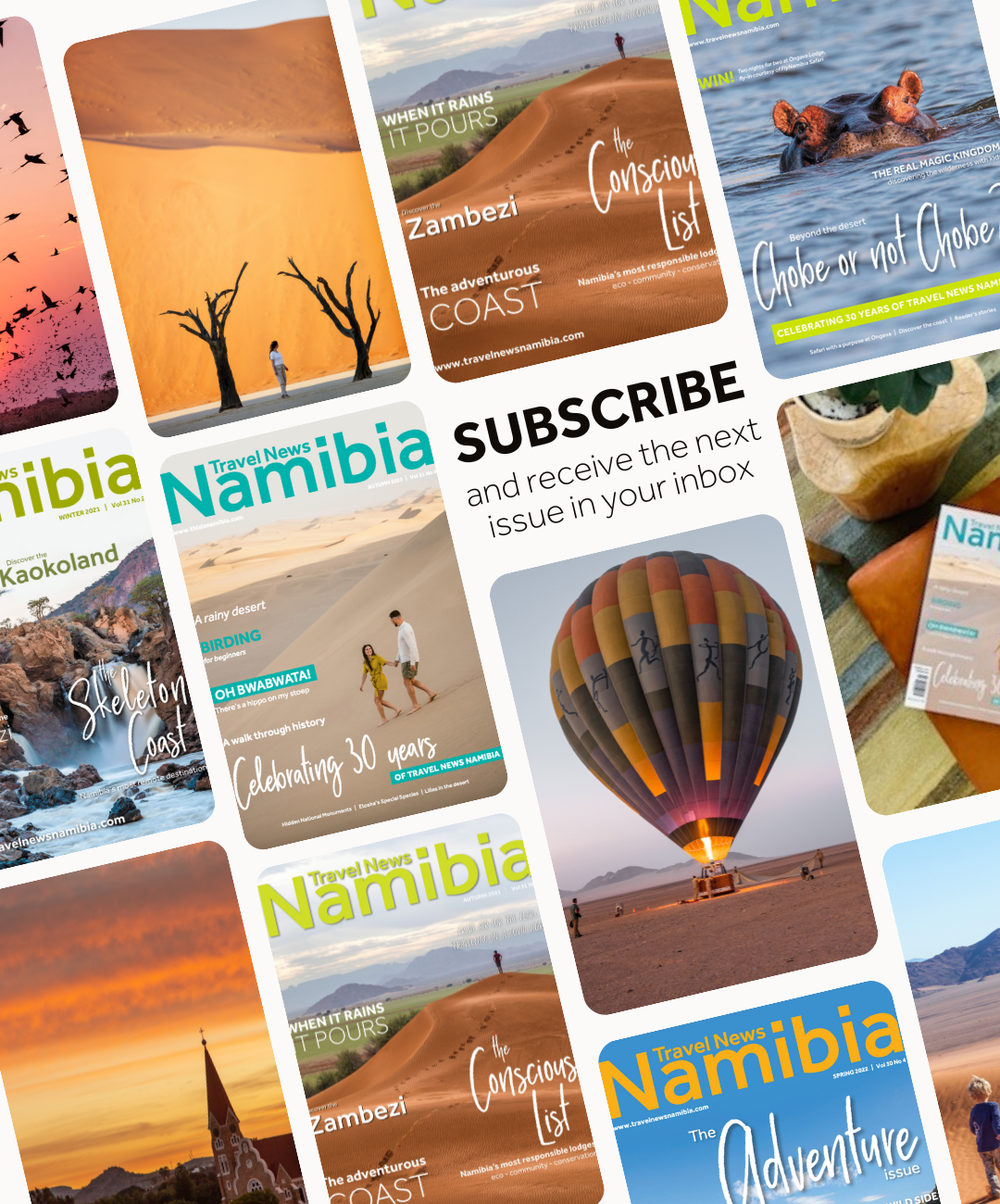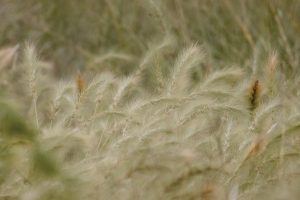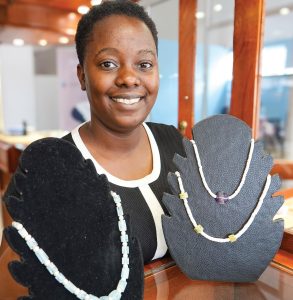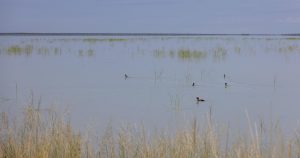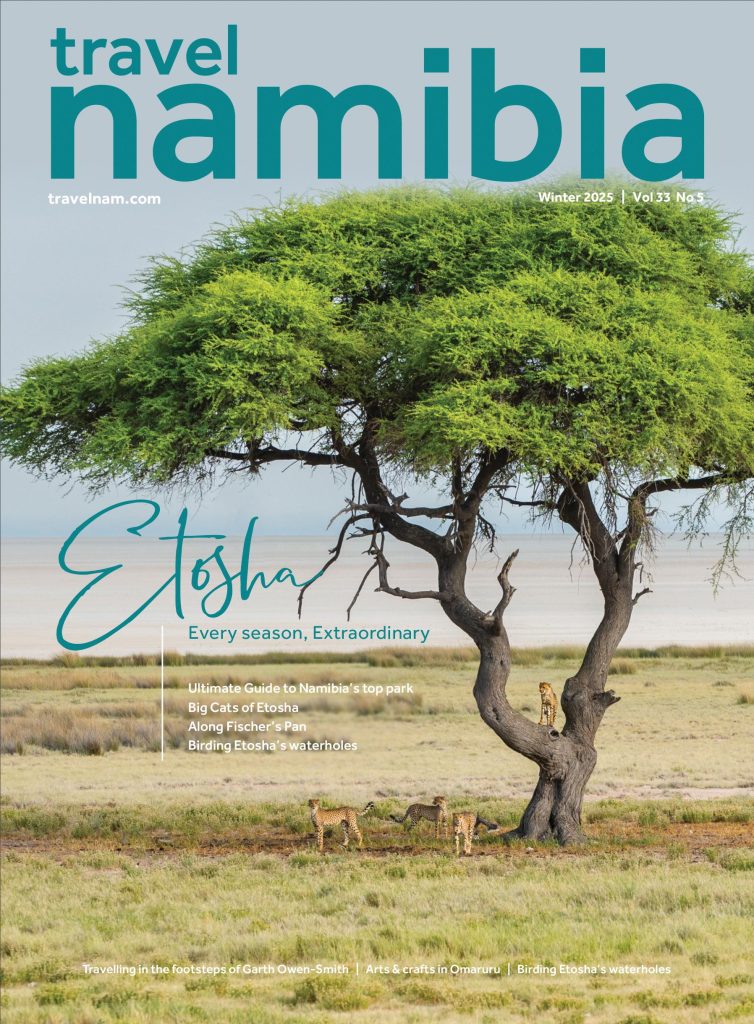
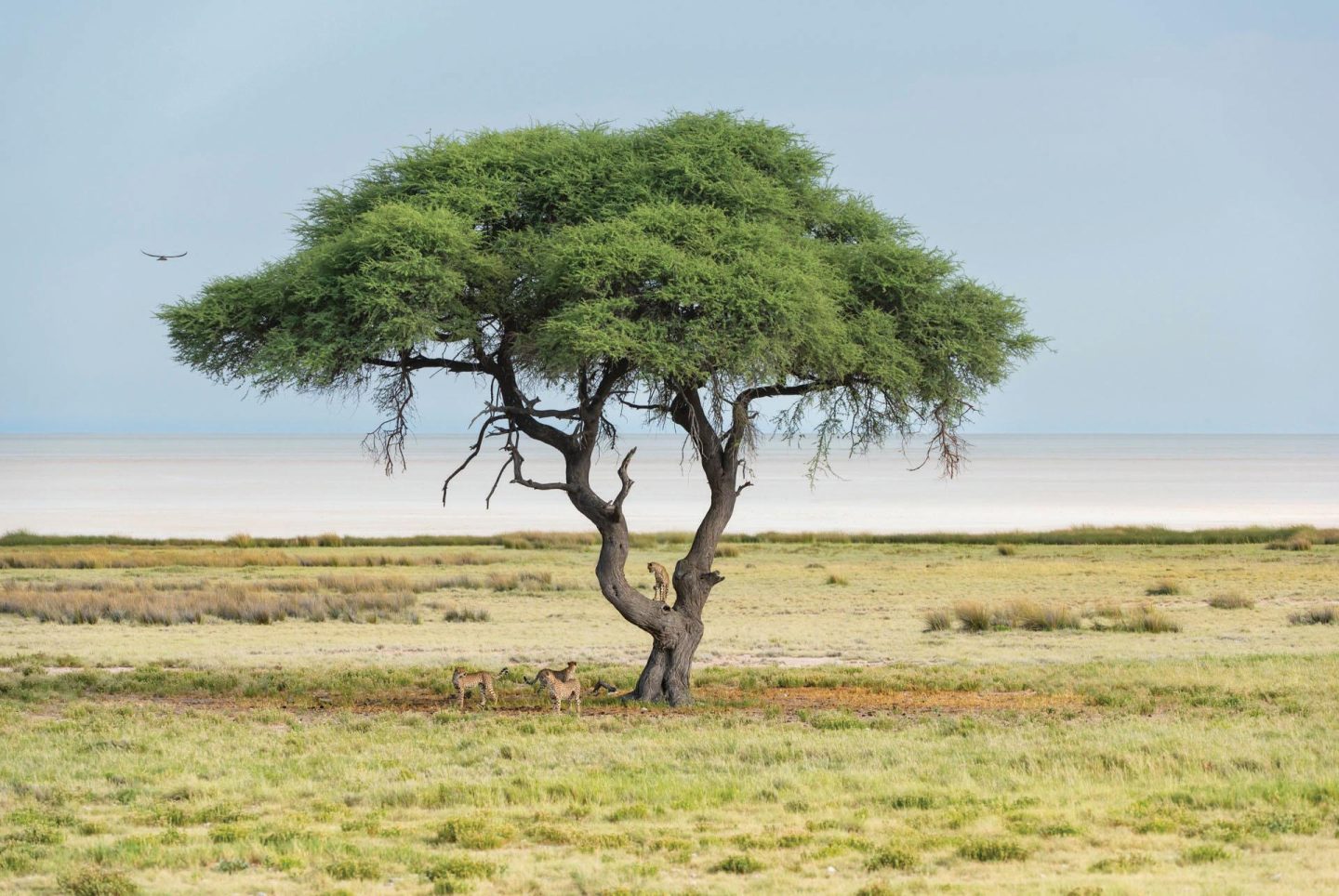
Charismatic large cats of
Etosha
Ask anybody planning to visit Etosha what they are hoping to see, and the answer in most cases would undoubtedly be “lion”, with elephant, leopard and cheetah also heading the top of the bucket list.
Text Anja Denker
From the Winter 2025 issue
Why do these charismatic felids hold such fascination and allure for most humans? Why do they evoke strong emotions like awe, admiration and fear, making them the most sought- after species, not only at Etosha but in any other national park and wilderness area in Namibia?
The lion has inspired more myths and traditions than any other animal. Due to its size, power, as well as its noble and majestic appearance, it is rightly referred to as the king of beasts.
Grace, strength, agility, elusiveness and sheer beauty are some of the other attributes that define large cats, especially leopards, with the cheetah famed for its slender elegance and remarkable speed, making it the fastest animal on land.
Predators also seem to hold a morbid fascination for people because of their hunting prowess, where a successful hunt shows that death is actually not just an end, but part of the eternal cycle of life, played out so vividly in nature.
It is enthralling and nerve-wracking to watch these animals employ various hunting techniques, relying on their keen senses and stalking their prey with stealth, blending into their surroundings with perfect camouflage. The duration and unpredictability of the outcome of these hunts are equally tantalising and suspenseful for any nature enthusiast and wildlife photographer, arousing strong and conflicting feelings ranging from excitement and relief when a predator manages to secure its meal, to feelings of sadness and empathy with the prey because of potential suffering and loss of life.
Etosha is a stronghold for lions, with an estimated number of between 350 and 400 spread across the park. Lions are social animals, with females living in prides and males living in coalitions which may come in contact with more than one pride while regularly patrolling their territory. The area around the waterholes of Okondeka, Nebrowni, Gemsbokvlakte, Rietfontein, Goas, Salvadora and Charitsaub, Chudop, Kalkheuwel, Groot and Klein Okevi as well as Tsumcor are productive for sightings of these apex predators.
Lions are largely nocturnal and are said to spend up to 20 hours per day sleeping, depending on the circumstances. They are, however, opportunistic predators with a wide prey spectrum which varies seasonally and regionally. In fact, I have once witnessed a male lion with an injured front leg try to hunt a springbok at around 14:30 in the heat of summer at Charl Marais Dam.
A lion attack is usually in the form of a short and powerful charge, followed by a leap onto the prey, with the kill effected by strangulation.
To maximise your chances of active lion sightings, however, it is advisable to head out at first daylight, especially in the hot summer months. Heading out in the late afternoon just before dusk can also yield some productive sightings. A pile-up of stationary vehicles is almost always a certain indicator of a lion sighting in the park!
Lions are highly vocal, with their deep and far-carrying roar – varying in intensity and pitch – being one of the most recognisable and enthralling sounds of the bush. They often roar at dawn and dusk, signalling territoriality or calling distant pride members.
The leopard has the widest global distribution of all the wild cats and is the most secretive and elusive of the big cats in the park. They are masters of camouflage and exceptionally adaptable, with habitats ranging from forests to arid savannas. Exquisitely beautiful, with rosettes covering most of the body, the coat colour can vary in accordance with the climate and habitat, from pale yellow to brown and golden brown. The African leopard also varies considerably in size and appearance from region to region.
Due to their elusive nature, leopard sightings in the park have been few and far between in the past, but over recent years certain individuals have become more habituated around vehicles and people, with good leopard sightings documented more frequently. Encounters with leopards rate as the most memorable and special of any sightings in the park.
It is hard to explain the rush of adrenaline one experiences when this sublime predator gracefully slinks across your path – usually when least expected – sending your pulse rate into orbit and making it almost impossible to hold the camera still.
I have been incredibly fortunate to be able to follow certain individuals over the past ten years, especially three generations of territorial females in the area around the Rietfontein waterhole, each sharing and later leaving the territory to their daughter. My very first encounter with the first of these special females occurred in December 2014 on the Rietfontein detour, when my daughter and I had the privilege of spending a whole day with this first generation. There was no other car in sight, which is a rare phenomenon! My husband and I encountered her again in May 2015, when she was stalking springbok at the Rietfontein waterhole and after a few suspenseful hours succeeded in securing a meal for herself. She was joined by her daughter to share the prey, and this was my last sighting of her. Her daughter took over the territory and became well-known in the area, fondly referred to as the “Rietfontein female”, very habituated around cars and relaxed in their presence. In June 2018, I photographed her and one of her cubs, a little female, on the main road directly opposite the waterhole. The other little cub, a male and an adult now, also roams the territory around the Rietfontein waterhole, but is more aloof and less approachable. My last sighting of the “Rietfontein female” was in October 2021, much further north, as she left the immediate vicinity of Rietfontein for her daughter. Fanciful, but it was almost as if she was saying goodbye, as I never saw her again. On a recent trip to Etosha in March 2023, I came across an adult female leopard with a cub at almost the exact same spot frequented by the “Rietfontein female” with her female cub in 2018. From the photos I was able to identify by means of the spot pattern the same small female cub, now an adult, with her offspring! Long may the legacy continue…
Other good areas for productive leopard sightings are the areas around Goas waterhole, Hartebeest Drive, the waterholes close to Namutoni Camp, Dik-Dik Drive and the area around Tsumcor.
The long-limbed, slender and elegant bodies of the cheetah have been evolved for speed, with the long tail providing balance. These graceful cats are opportunistic hunters, often seen hunting during daytime but usually shifting their activity towards dawn and dusk hours when the weather is warmer. They are largely concentrated around the vast plains in the park, enabling them to utilise the advantage of their agility for spectacular, high-speed chases, usually in pursuit of springbok.
Memorable and productive sightings of cheetah are regularly reported from the area around Fischer’s Pan, where they are often seen perched on termite mounds used as a vantage point to look out for prey opportunities or for marking their territories. The area around Chudop, Doringdraai, Salvadora, Charitsaub and the plains to the east and west of Halali Camp are also favoured hunting grounds.
Cheetah population levels in Etosha are relatively low. A recent study using camera traps placed in the park and neighbouring farms to obtain cheetah movement data, estimated the cheetah density to be between 0.50 and 0.66 cheetah/100 km2 . These low numbers have generally been attributed to competition from other predators, especially lions.
There is no denying that these three striking and noble felids are major drawcards to the park, evoking excitement and admiration, as well as empathy and concern for their wellbeing. TN

